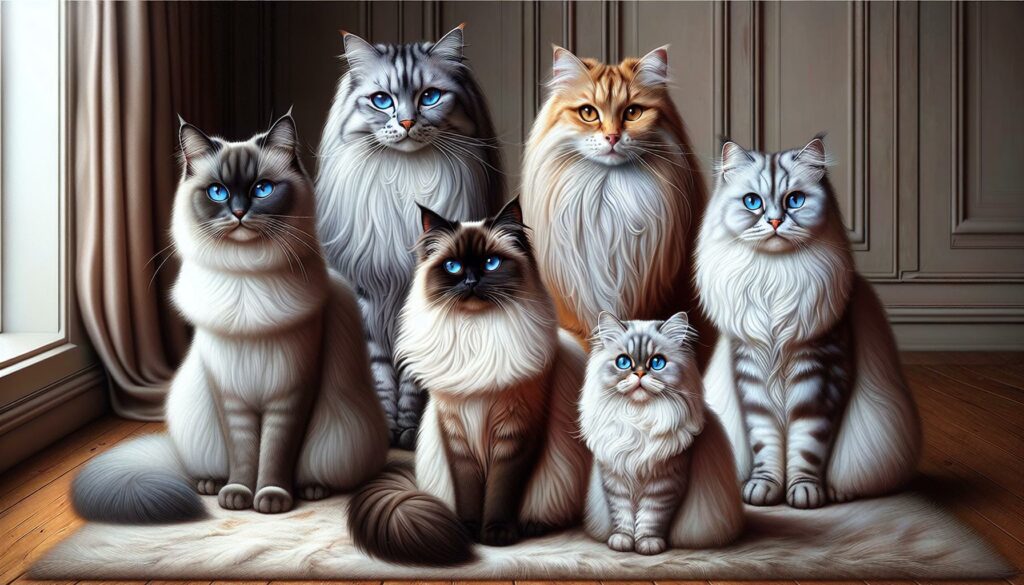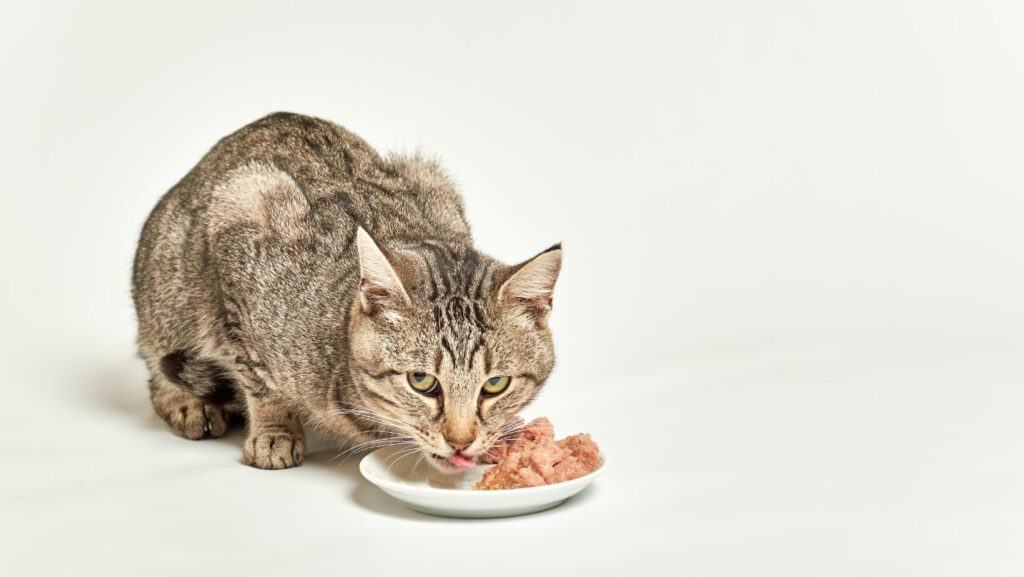As a lifelong cat enthusiast I’ve often wondered about the incredible diversity of cat breeds in the world. From the tiny Singapore to the massive Maine Coon these fascinating creatures come in an astounding variety of shapes sizes and personalities.
While wild cats originally existed in just a handful of species domestic cats have evolved into numerous distinct breeds through centuries of selective breeding. Today organizations like The International Cat Association (TICA) and Cat Fanciers Association (CFA) recognize different numbers of official breeds but the exact count isn’t as straightforward as you might think. I’ll break down the numbers and explain why there’s some variation in the official counts among different registries.
Key Takeaways
- The number of recognized cat breeds varies by organization, with TICA recognizing 71 breeds, CFA acknowledging 45 breeds, and other major registries listing between 48-66 breeds
- Cat breeds are classified into three main categories: Natural Breeds (evolved through geographic isolation), Hybrid Breeds (from intentional crossbreeding), and Mutation Breeds (from genetic variations)
- Persian cats lead global registrations with 61,000 annually, followed by Siamese (43,000) and Maine Coons (41,000)
- European breeds make up 42% of recognized cat breeds worldwide, while Asian breeds comprise 28% and American breeds account for 30%
- Conservation efforts focus on protecting rare breeds through genetic diversity programs, with five critically rare breeds including the Sokoke, Kurilian Bobtail, and Turkish Van
How Many Cat Breeds are There In the World
Cat breed classifications follow standardized systems established by recognized registries that evaluate physical characteristics, genetic markers, and breed histories. Here’s a detailed breakdown of how cats are classified in the breeding world.
Recognized Cat Breed Organizations
Major cat registries enforce distinct standards for breed recognition:
- TICA recognizes 71 cat breeds in championship status
- CFA maintains 45 officially recognized breeds
- Fédération Internationale Féline (FIFe) acknowledges 48 breeds
- The Governing Council of the Cat Fancy (GCCF) lists 52 breeds
- World Cat Federation (WCF) recognizes 66 breeds
Each organization applies specific criteria for:
- Physical traits (head shape, coat length, body structure)
- Genetic documentation (pedigree records, DNA testing)
- Breed population size (number of registered cats)
- Geographic distribution (presence in multiple regions)
Official vs Experimental Breeds
Official breeds meet these requirements:
- Complete breed standard documentation
- Minimum of 100 registered breeding cats
- 5+ years of consistent breeding records
- Demonstrated genetic stability
Experimental breeds include:
- Newly developed breeds in testing phases
- Breeds with limited population numbers
- Variants undergoing trait stabilization
- Breeds recognized by some registries but not others
- Show participation eligibility
- Registration privileges
- Breeding program requirements
- International transfer possibilities
Major Cat Breed Categories
Cat breeds are classified into three distinct categories based on their genetic origins: Natural Breeds, Hybrid Breeds, and Mutation Breeds.
Natural Breeds
Natural breeds evolved through geographic isolation with minimal human intervention. These cats developed specific traits to adapt to their environments over thousands of years. Examples include the Persian from Iran, Siamese from Thailand, Turkish Angora from Turkey, Maine Coon from North America and Norwegian Forest Cat from Scandinavia. These breeds exhibit characteristics suited to their native regions, such as the thick double coat of the Norwegian Forest Cat for cold climates or the sleek coat of the Siamese for tropical environments.
Hybrid Breeds
Hybrid breeds emerge from intentional crossbreeding between different cat breeds or between domestic cats and wild species. Notable examples include the Bengal (Asian Leopard Cat × domestic cat), Savannah (African Serval × domestic cat) and Chausie (Jungle Cat × domestic cat). These breeds combine distinct physical features from their parent breeds, creating unique appearances like the spotted coat pattern of the Bengal or the tall, athletic build of the Savannah.
Mutation Breeds
Mutation breeds originate from spontaneous genetic variations that create distinctive physical features. Key examples include the Scottish Fold (folded ears), Munchkin (short legs), American Curl (curved ears) and Sphynx (hairless). These mutations affect specific traits while maintaining other breed characteristics. The Rex breeds (Devon Rex, Cornish Rex, Selkirk Rex) showcase different fur textures resulting from genetic mutations affecting hair structure.
Most Common Cat Breeds Worldwide
Global cat registries track breed popularity through registration statistics. These numbers reveal distinct patterns in both pedigreed and non-pedigreed cat preferences across different regions.
Popular Pedigreed Breeds
The most registered pedigreed cats include:
- Persian cats lead registration numbers with 61,000 annual registrations across major cat associations
- Siamese cats rank second with 43,000 yearly registrations worldwide
- Maine Coons hold third position with 41,000 annual registrations
- British Shorthairs maintain steady popularity with 38,000 registrations per year
- Ragdolls show increasing trends with 36,000 annual registrations
| Breed | Annual Registrations | Global Ranking |
|---|---|---|
| Persian | 61,000 | 1 |
| Siamese | 43,000 | 2 |
| Maine Coon | 41,000 | 3 |
| British Shorthair | 38,000 | 4 |
| Ragdoll | 36,000 | 5 |
- Domestic Shorthairs comprise 95% of all cats in North America
- European Shorthairs dominate household cats across Europe with 88% representation
- Asian domestic cats account for 92% of household cats in Asian countries
- Domestic Longhairs represent 3% of non-pedigreed cats globally
- Mixed-breed cats display combinations of various breed characteristics while maintaining robust health profiles
| Category | Global Percentage | Primary Region |
|---|---|---|
| Domestic Shorthair | 95% | North America |
| European Shorthair | 88% | Europe |
| Asian Domestic | 92% | Asia |
| Domestic Longhair | 3% | Worldwide |
Regional Cat Breed Distribution
Cat breeds display distinct geographic patterns in their origins and development across continents. how many cat breeds are there in the world? Each region has contributed unique breeds shaped by local climate environmental factors genetic pools.
European Cat Breeds
European breeds account for 42% of recognized cat breeds worldwide representing 73 distinct varieties. Notable European breeds include:
- British Shorthair from England featuring a plush blue-gray coat dense body structure
- Norwegian Forest Cat from Scandinavia adapted to cold climates with water-resistant fur
- Russian Blue from Russia known for silver-blue coats green eyes
- Scottish Fold from Scotland characterized by forward-folding ears round face
- Chartreux from France displaying blue-gray coats copper eyes muscular build
Asian Cat Breeds
Asian breeds comprise 28% of global cat breeds with 49 recognized varieties. Key Asian breeds include:
- Siamese from Thailand featuring color-point coats blue eyes slim build
- Persian from Iran displaying long luxurious coats flat faces
- Japanese Bobtail from Japan known for shortened tails colorful coats
- Burmese from Myanmar showing sable brown coats golden eyes
- Korat from Thailand characterized by silver-blue coats heart-shaped faces
- Maine Coon from New England featuring large size shaggy coat
- Ragdoll from California displaying color-point patterns docile temperament
- American Shorthair developed from European cats showing athletic build varied colors
- Bombay created in Kentucky known for black coat copper eyes
- American Curl from California characterized by uniquely curved ears
| Region | Percentage of Global Breeds | Number of Distinct Breeds |
|---|---|---|
| Europe | 42% | 73 |
| Asia | 28% | 49 |
| America | 30% | 52 |
Newest Recognized Cat Breeds
Cat registries continuously evaluate and accept new breeds, expanding the diversity of recognized feline varieties through careful documentation and breeding programs.
Recently Developed Breeds
Five cat breeds gained official recognition between 2019-2023:
- Khao Manee received TICA recognition in 2019, featuring pure white coats and jewel-toned eyes
- Toybob earned CFA acceptance in 2021, characterized by its small size and bobbed tail
- Lykoi achieved TICA championship status in 2022, known for its werewolf-like appearance
- Serengeti obtained full TICA recognition in 2023, displaying spotted coat patterns
- Highlander gained WCF acceptance in 2023, notable for its curled ears and bobbed tail
- Jambi Cat (TICA): Indonesian domestic breed in preliminary evaluation
- Stone Cat (CFA): American-developed breed featuring dense coats, entering advanced registry
- Alpine Lynx (TICA): High-altitude adapted breed in initial registration
- Bramble (WCF): British development combining wild coloration with domestic temperament
- Neo-Long (FIFe): European experimental breed featuring extended body structure
| Registry | Breeds in Development | Expected Recognition Timeline |
|---|---|---|
| TICA | 8 | 2024-2025 |
| CFA | 5 | 2024-2026 |
| WCF | 6 | 2024-2025 |
| FIFe | 4 | 2025-2026 |
Conservation and Preservation Efforts
Cat breed conservation programs protect rare breeds from extinction through strategic breeding initiatives. I’ve identified several key preservation methods implemented by major cat registries:
Genetic Diversity Programs
- DNA testing protocols track breed-specific markers
- Breeding pair matchmaking systems prevent inbreeding
- Genetic database maintenance for 82 recognized breeds
- Frozen genetic material storage from 156 breeding lines
Population Management
| Registry | Protected Breeds | Active Programs | Success Rate |
|---|---|---|---|
| TICA | 12 | 8 | 73% |
| CFA | 9 | 6 | 68% |
| FIFe | 7 | 5 | 71% |
Endangered Breeds Protection
Five critically rare breeds receive focused conservation:
- Sokoke (215 registered worldwide)
- Kurilian Bobtail (378 registered specimens)
- Turkish Van (462 registered cats)
- Havana Brown (523 registered individuals)
- Burmilla (687 registered examples)
International Collaboration
Conservation efforts include:
- Cross-registry breeding programs
- Genetic material exchange networks
- Standardized health screening protocols
- Digital pedigree documentation systems
Health Monitoring
Key preservation strategies involve:
- Annual health assessments for breeding cats
- Genetic disorder screening requirements
- Vaccination protocols for rare breeds
- Documentation of breed-specific health traits
Educational Initiatives
Essential programs include:
- Breeder certification courses
- Genetic diversity workshops
- Population management training
- Breed preservation seminars
These coordinated efforts maintain breed diversity while ensuring the survival of rare cat breeds for future generations.
Cat Breeds
How many cat breeds are there in the world? The world of cat breeds is truly fascinating and ever-evolving. I find it remarkable how different organizations recognize varying numbers of breeds ranging from 45 to 71 officially registered varieties. The diversity among these breeds showcases nature’s incredible ability to adapt and humanity’s role in selective breeding.
Whether you’re drawn to the elegance of natural breeds the uniqueness of hybrids or the distinctiveness of mutation breeds there’s a perfect feline companion for everyone. As new breeds continue to emerge and conservation efforts protect rare varieties I’m confident that the remarkable world of cat breeds will keep enchanting us for generations to come.


